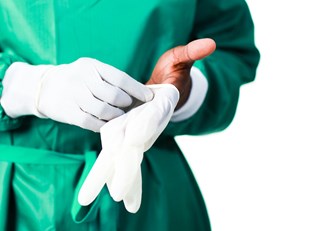When men develop large breasts, it can be embarrassing. Not only that, but it can also be painful and sensitive. This condition is called gynecomastia, and it's relatively common. It affects up to 60% of all men worldwide, specifically those between the ages of 50 and 69. Gynecomastia may happen in one or both breasts, and it's usually noncancerous.
So, what can men do about it? Sometimes, breast size may decrease when you lose weight. In other cases, medication may be considered. But for those who don't respond to medications, surgery may be an alternative. A male breast reduction can help you have a firmer, flatter chest that is more comfortable and doesn't leave you feeling self-conscious. Here's everything you need to know about it.
What Causes Gynecomastia?
There are many potential causes of gynecomastia, though some men develop the conditions without a known cause. Some of these include:
- Hormonal changes
- Hereditary factors
- Age
- Side effects from certain medications
- Obesity
- Injury or trauma
- Certain diseases, Such as kidney disease, liver disease, or thyroid disorders
- Some newborns are born with gynecomastia
When Is Male Breast Reduction Surgery Necessary?
Male breast reduction surgery is elective, meaning it's not a medical emergency or even a necessity. Most men who choose to have the surgery do so because they want to feel better about the way they look and improve their confidence. However, some men do it because their breast size makes them uncomfortable.
About 20,000 such procedures take place in the United States each year. If you are healthy without underlying conditions, you may be a good candidate for the surgery.
What Are the Pros of Male Breast Reduction Surgery?
The biggest benefit of male breast reduction surgery is improved confidence. It can also help improve comfort. Men who undergo the surgery find that it's easier to buy clothing and feel good about the way they look in what they wear. They also report that activities like running, swimming, and jumping are more comfortable.
What Are the Cons of Male Breast Reduction Surgery?
As with any type of surgery, there are always potential risks involved. For example, you could develop an infection at the site of the incision. Scars and bruises may also occur, and you could develop blood clots. Some men find that their breasts aren't the same size after surgery, and others find that they lose feeling in the area of their breasts. Always talk to your doctor about potential risks and concerns when you have any type of medical procedure.
What Happens During Male Breast Reduction Surgery?
Every male breast reduction surgery isn't the same. Your doctor will make a decision on the best procedure for your body and desired results. Before the surgery, you'll visit a cosmetic surgeon for a consultation. Provide them with your medical history and any health problems you have or medications you take. Your surgeon will perform a physical exam to help determine the right path for you.
Typically, the surgeon will either use liposuction or make a traditional surgical incision during the surgery. An incision usually is needed when you have excess skin and tissue that requires removal. In some cases, you may even need a combination of the two. Both procedures require anesthesia.
Again, every procedure is different and based on your individual needs. That will also impact where and how big the incision will be and the type of scar it might leave. In some cases, your surgeon may reposition your nipple and areola.
What Is the Outlook After Male Breast Reduction Surgery?
In most cases, you can go home after you have male breast reduction surgery. You'll need to make sure you have someone to drive you home, and you'll want to follow your post-op instructions carefully to ensure you don't get an infection and heal properly. You may have to take a two-week break from most physical activities, including sex. You may also need to take one to two weeks off from work. You may need to wear a compression vest and/or drains for up to six weeks. Lastly, you’ll follow up with your surgeon for regular appointments to ensure you're healing correctly.
In general, you may experience some pain in the weeks after your surgery, but it's typically managed well with medication. It can also take up to six months for you to notice a major difference in the size of your breasts as your body heals and swelling goes away.



